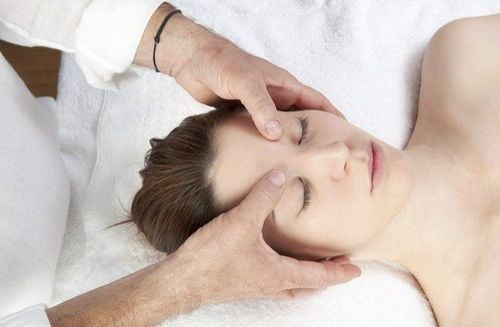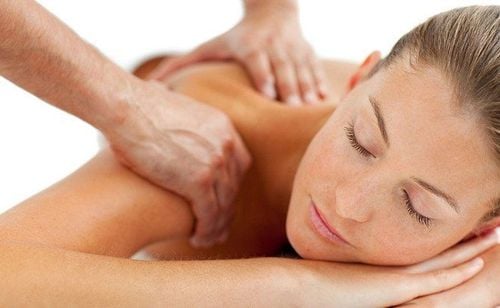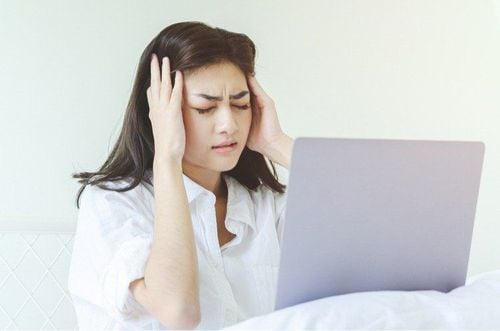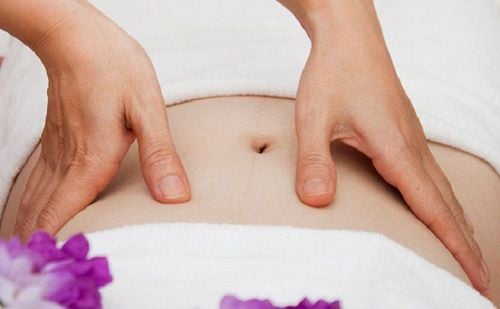This is an automatically translated article.
Foot reflexology is becoming more and more popular and is sought by many people to help the body relax, even to help cure diseases. However, when should reflexology be appropriate or who should not?
1. What is foot reflexology?
Foot reflexology is a therapy that applies light pressure to certain points along the foot (reflexology can also be done on the hands or ears) to help the body relax and be comfortable. When the body is under stress, it will function better. Acupressure connects acupressure points outside and inside the body, similar to acupuncture. Although, acupressure also uses hands to apply pressure, however, it is not a form of massage.
Like other therapies, reflexology should only be used as a supplement to medical treatments, not as an alternative, as reflexology therapists cannot provide a diagnosis. diagnose or treat disease.
MORE: What is acupressure massage?
2. Benefits of foot reflexology
Foot reflexology can help you feel less stressed, more relaxed and more energetic. But this therapy can provide deeper benefits if you have certain health problems.
Some patients report feeling less pain and discomfort when they are less stressed thanks to acupressure. Several studies on the psychological benefits of this therapy have found that reflexology enhances feelings of well-being and helps people manage their condition more easily.
However, more research is still needed to see if acupressure has a direct effect on any specific condition. Currently, the benefits of acupressure are known to be:
Reduce anxiety in heart surgery patients Reduce pain during labor Relieve joint pain Reduce fatigue, skin discomfort and some symptoms of multiple diseases sclerosis Relieves both mental and physical pain caused by cancer In addition, foot reflexology can also help:
Improve sinus problems Relieve back pain Reduce constipation MORE: Treat circulatory dysfunction brain with... acupressure
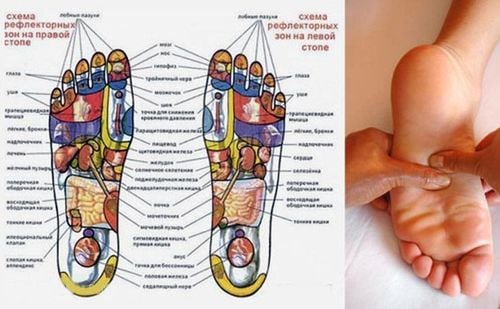
Bạn nên lưu ý bấm huyệt lúc nào để đạt hiệu quả tốt nhất
3. What does a foot reflexology session look like?
To find out and make sure foot reflexology is right for you, therapists will start by asking questions about your health, common foods, lifestyle, and any other health conditions. otherwise healthy. Based on the answer, the therapist will decide and choose whether acupressure is on the legs or needs to be combined with the hands and ears. If you have questions about therapy, ask the therapist now.Reflexology is often provided at spa and massage services. So, the foot reflexology room will probably have soothing, relaxing music and scenery, combined with low light and a little essential oil. To perform reflexology, you can lie on the massage table or sit on a recliner. You can wear clothes, but wear comfortable clothes to feel more relaxed.
Many reflexologists will start by gently applying oil or cream to your feet. Next, they will apply light to moderate pressure to each foot with different techniques.
Each foot reflexology session usually takes about 30 - 60 minutes. During acupressure, you may feel so relaxed that you fall asleep or feel an emotional surge as energy moves through your body. Afterwards, you may feel energized or calm.
Acupressure can be done for a set amount of time and often as a “adjustment” measure to help with healing. You can also ask the reflexologist about performing reflexology yourself at home between visits or using alternative tools or equipment.
In addition to foot reflexology, hand reflexology for a period of 5 minutes also offers a number of benefits and this activity can be easily done anytime feeling stressed, even while working.
Hand reflexology can be as simple as using one hand to grasp each finger of the other hand, starting with the thumb and index finger, holding for 1-2 minutes before moving on to the next finger and Keep doing this until you reach your little finger, then switch hands and repeat.
4. How does foot reflexology work?
There are different theories as to how exactly foot reflexology works, but based on the main concept all the different areas of the foot are related to the specific body part and the Putting pressure on an area of the foot can affect that organ.
According to zone theory, the foot is divided into 5 zones running from toe to heel, big toe is zone 1 and little toe is zone 5. The body is divided into 10 zones running from head to toe. Zone 1 aligns with the left and right central areas of the body and zone 5 aligns with the left and right sides of the body. When acupressure is applied to the foot, it puts pressure on area 1 of the foot and it can relieve pain in the part of the body associated with that area.
Another theory is that acupressure works by stimulating the nervous system. When pressing on the areas of the feet gently and gently, it will stimulate the nerves in that area to transmit signals to the central nervous system and help the body relax, positively affecting breathing, circulation. blood volume, immune response, ...
Meanwhile, another theory is that foot reflexology offsets the way the brain registers pain. When you massage your feet, the feeling of relaxation can help reduce pain, reduce stress and improve your mood, making the body perceive pain less acutely.
In addition, another theory is that the body contains an important source of energy that is affected when we feel stressed. If something isn't done to relieve stress, the body won't work as well as it should and can lead to aches and pains or illness. At that time, acupressure was considered a method to help maintain the flow of vital energy inside the body.
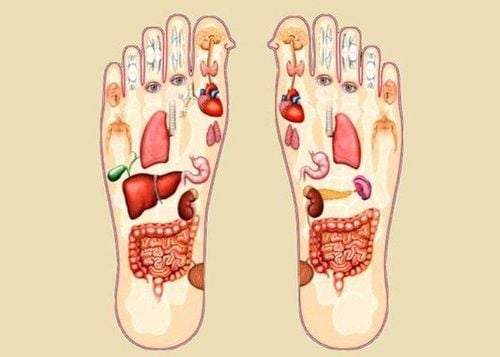
Bấm huyệt bàn chân có liên quan đến bộ phận cụ thể trên cơ thể
5. When is acupressure appropriate?
Most people including patients who are being treated in hospitals can get certain benefits from reflexology. A study of women with advanced breast cancer found that acupressure was safe even for those with advanced disease.
However, acupressure is not always appropriate. The following people need to avoid acupressure at certain times:
Have gout, the body is recovering from a foot injury, pregnant women, blood clots because acupressure can affect circulation blood volume. Have a chronic illness, or disease affecting the feet, such as arthritis in the feet or ankles. If you want to do foot reflexology, you need to consult your doctor before doing it and instead of your feet, you can do acupressure on your hands or ears. No matter where foot reflexology is performed, choose a reputable, trained and certified reflexology specialist and service facility. Especially, if you are suffering from some chronic diseases affecting the legs, you need to avoid acupressure.
Please dial HOTLINE for more information or register for an appointment HERE. Download MyVinmec app to make appointments faster and to manage your bookings easily.
Reference source: webmd.com





